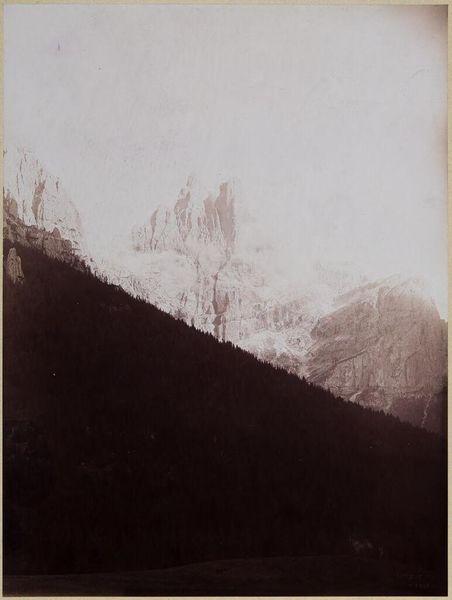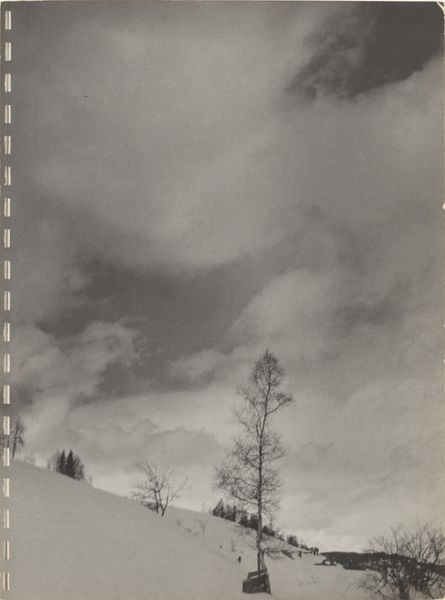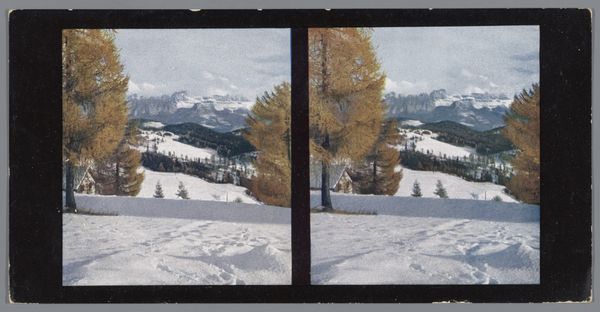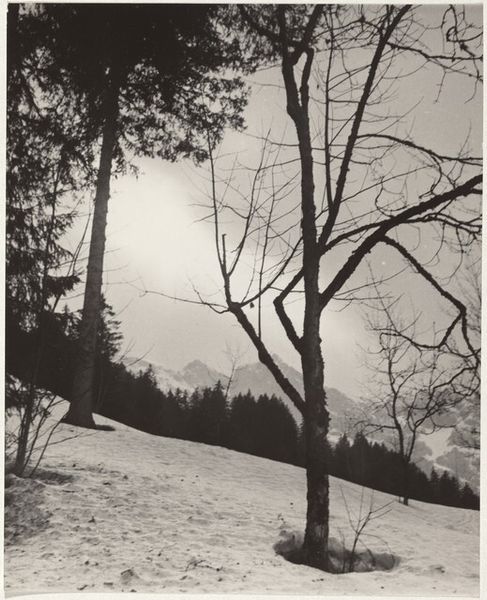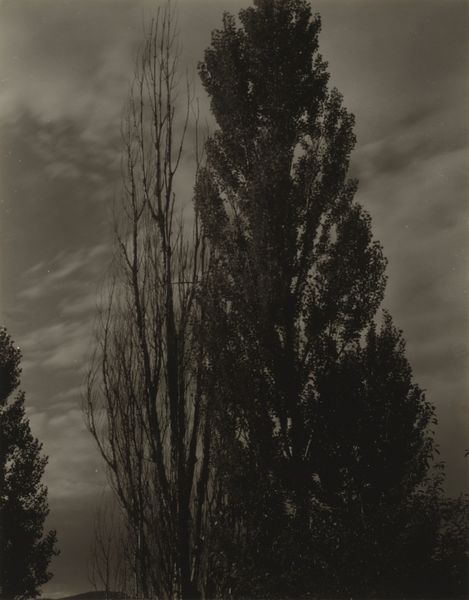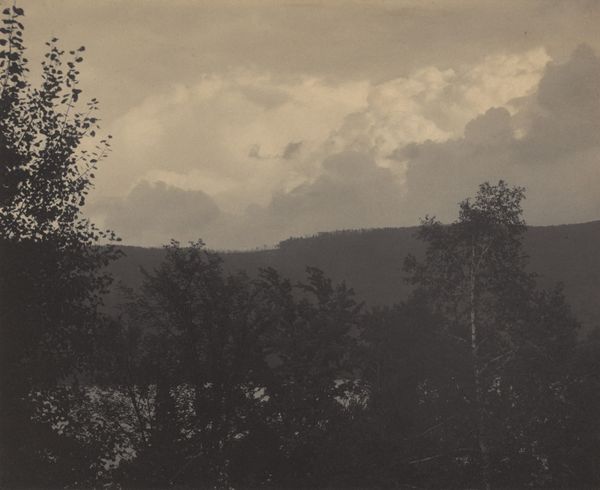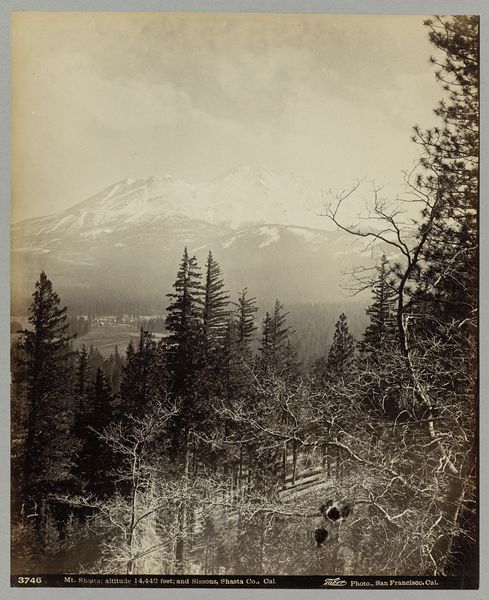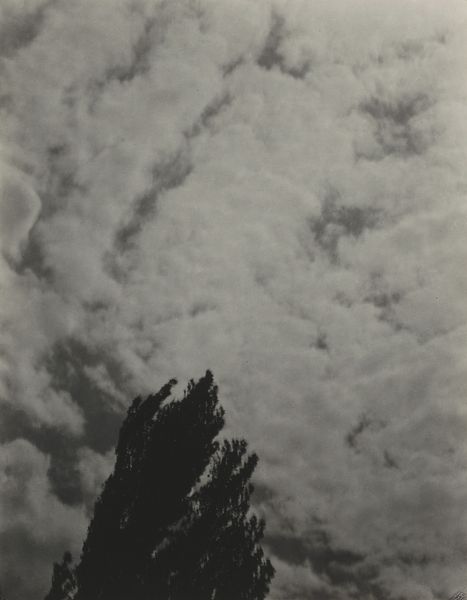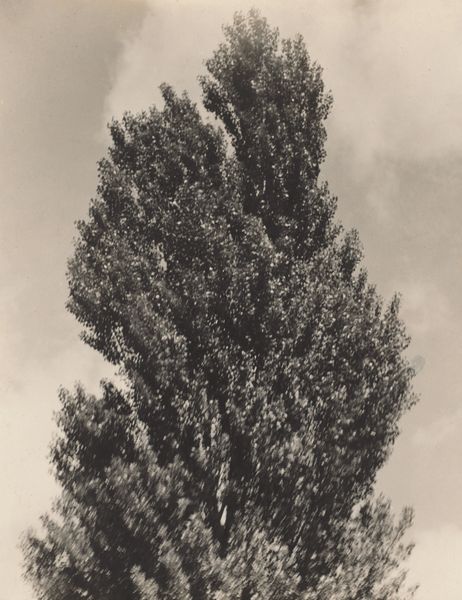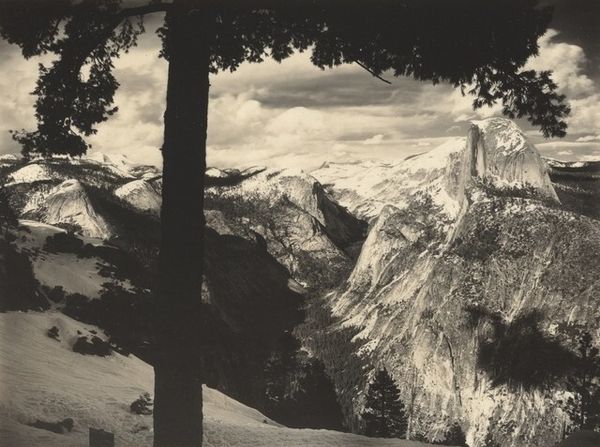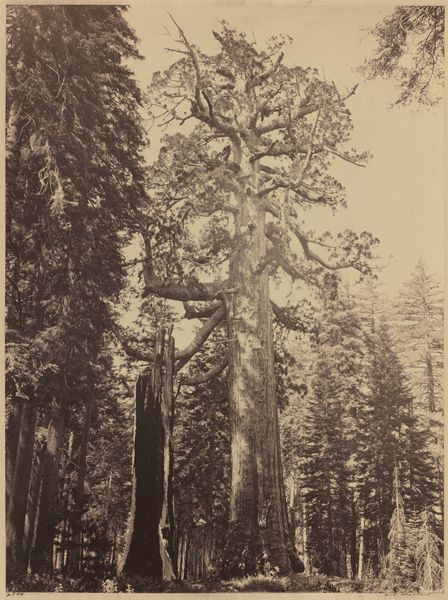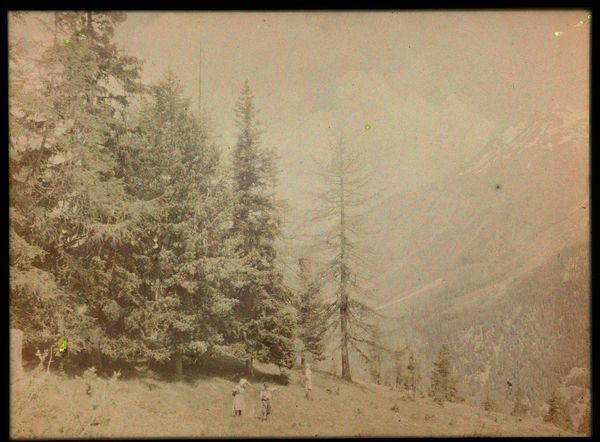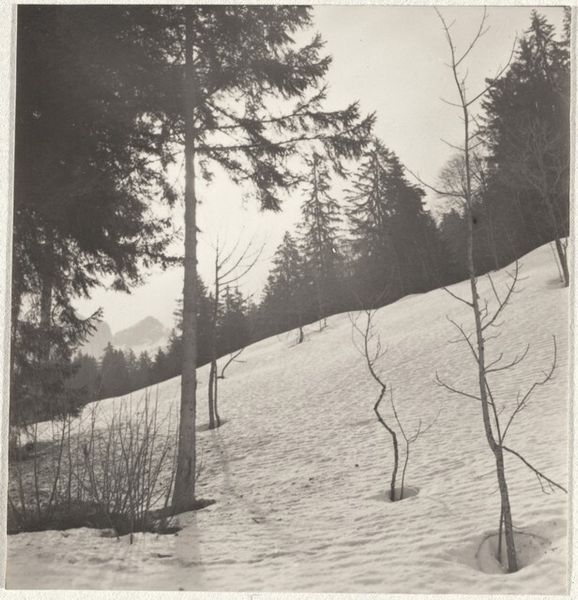
Dimensions: image: 21.59 × 16.51 cm (8 1/2 × 6 1/2 in.) framed: 34.61 × 28.89 × 3.81 cm (13 5/8 × 11 3/8 × 1 1/2 in.)
Copyright: National Gallery of Art: CC0 1.0
Curator: Let’s turn our attention to Binh Danh's “Sugar Pine Tree, Yosemite, CA, April 2, 2012,” created in 2012 using the photographic medium. Immediately, the dark moody hues grab my attention. How does it strike you? Editor: I feel a kind of reverence looking at it. The colossal sugar pine trunk dominating the foreground speaks to nature's resilience and endurance, juxtaposed with the fading backdrop almost suggesting vulnerability. It feels like a powerful statement about time and environmental fragility. Curator: It's intriguing to see how Danh employs this seemingly archaic photographic process in a contemporary context, isn’t it? Using the daguerreotype to capture this natural vista of Yosemite links directly to the nineteenth-century photographic surveys used to establish these national parks, yet this feels distinctly different. Editor: Exactly, placing it within that history of landscape photography, where images were actively used for conservation efforts or even territorial claims, gives it such complexity. This contemporary return prompts critical inquiry; who gets to represent nature and what purpose does it serve now, in our climate crisis reality? Curator: It feels very conscious, considering the historical associations between landscape photography, manifest destiny, and ultimately, ecological disruption. I feel that Binh Danh asks us to reconsider our romantic visions of untouched nature, and reflect instead on our active and ongoing role as custodians. Editor: I agree. It isn't just about picturesque scenery, it's about our relationship to these spaces. The choice of this aged technique is very deliberate: emphasizing the physical and chemical process is meant to invoke our human mark, making sure the audience doesn't merely perceive an untarnished, "objective" slice of nature. Curator: Ultimately, Danh is prompting a deeper examination into how we engage with environmental narratives, reminding us that even seemingly objective artistic approaches have been part of evolving human social and cultural interventions. Editor: I concur. In a world filled with quickly disappearing pixels, an image demanding this sort of careful crafting is a call to thoughtful examination of how our visions shape not just images but the environments we reflect upon.
Comments
No comments
Be the first to comment and join the conversation on the ultimate creative platform.
